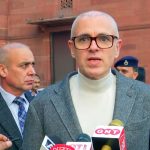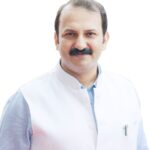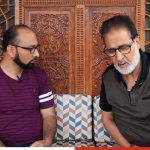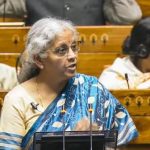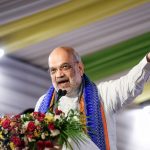Jammu, Apr 04: Lieutenant Governor, Manoj Sinha, is nearing the completion of his almost five-year tenure, a period marked by sweeping political, social, and economic transformations in the Union Territory.
Speaking exclusively to News Channel, Sinha provided insights into the region’s remarkable progress since he took-over, and addressed some key ongoing issues, including the possibility of statehood restoration.
Sinha assumed office just 10 months after the historic revocation of Article 370 and the reorganisation of Jammu and Kashmir into a Union Territory.
Reflecting on his personal journey, Sinha discussed his transition from a Member of Parliament and Railway Minister to the Lieutenant Governor of Jammu and Kashmir. He credited his deep connection to the region for his decision to take on this responsibility. “I have always worked with sincerity,” he remarked, referencing his close working relationships with Prime Minister Modi and Home Minister Amit Shah.
One of the most significant achievements of Sinha’s tenure has been the restoration of peace in the region. The Lieutenant Governor pointed to the successful conduct of elections, including the Lok Sabha and Assembly elections, in a peaceful environment as a testament to the improving security situation.
“In the past, elections in Jammu and Kashmir were often marked by violence and unrest. Today, we can proudly say that the entire electoral process was conducted peacefully—without a single stone being thrown,” Sinha remarked. “Voter turnout was high, even in traditionally low-participation areas. This was a historic moment for democracy in the region.”
The high voter turnout, particularly in areas with historically low participation, was a momentous sign of the region’s renewed faith in democracy. “Long lines of voters, including young people, elders, and women, were seen across the region,” Sinha pointed out, calling it a historic moment for Jammu and Kashmir’s democratic process.
Sinha also highlighted the reduction in terrorism during his tenure. “Many major terrorist organisations no longer have strong leadership, and local recruitment has drastically declined to its lowest levels in the past 35 years,” he stated. He added that casualties among civilians and security forces have fallen considerably, and acts of violence such as stone-pelting have ceased.
When asked about the restoration of Jammu and Kashmir’s statehood. Sinha confirmed that local political parties had raised concerns about the need for statehood, but he reiterated that the central government would take the necessary steps before restoring the full status of the state.
“Prime Minister Modi and Home Minister Amit Shah have made it clear that statehood will be restored at the appropriate time,” he said. “But we must follow the constitutional process step by step to ensure stability and proper representation.”
On the region’s impressive economic turnaround, Sinha said, “Jammu and Kashmir’s economy has grown more than two and a half times over the past four years. The average income of residents has doubled, moving from ₹75,000 to ₹1.5 lakh,” Sinha said.
“Jammu and Kashmir has seen unprecedented economic growth. We have implemented measures to curb wasteful expenditure, which has led to more efficient governance,” said Sinha. “The increase in the region’s average income is a reflection of the development we are seeing across various sectors, including agriculture, industry, and infrastructure.”
He also emphasized the substantial improvements in infrastructure, particularly connectivity. “When I arrived, it used to take 8 hours, sometimes even more, to travel from Jammu to Srinagar. Now, people can comfortably make the journey in 4 to 4.5 hours,” Sinha remarked. Ongoing projects worth approximately ₹1.5 lakh crore include the Jammu and Srinagar Ring Roads, the Katra-Delhi Expressway, and the Sonamarg Tunnel, which, as of the recent inauguration by Prime Minister Modi, allows year-round access to the scenic destination. The Zojila Tunnel, expected to be completed by 2027, will enhance access to Leh.
Sinha also pointed to major strides in rail and air connectivity. “Srinagar is now connected to Kanyakumari by rail, and the Prime Minister is expected to dedicate this rail line to the nation soon,” he shared. At the same time, airports in Jammu and Srinagar have expanded, with night landing facilities now operational.
Sinha discussed the region’s power sector transformation. Jammu and Kashmir, previously reliant on rainfall-dependent hydroelectric power, is now on the path to self-sufficiency. Four major power projects are underway, with an additional focus on solar power.
“We have also made significant progress in reducing power losses. Under the RDSS scheme, we’ve installed over 6.5 million smart meters. Our goal is to ensure energy self-sufficiency within the next few years,” he shared.
Sinha also spoke about the progress in agriculture, where the majority of the population is engaged. Through the Holistic Agriculture Development Plan (HADP), the region has seen improvements in fodder production, milk production, and agricultural output.
“Two years ago, Jammu and Kashmir was milk-deficient, processing only 37,000 litres of milk daily. Today, that number has increased to 2.5 lakh litres per day, and we expect it to rise to 5 lakh litres shortly,” he explained. The region’s reliance on imports for meat and eggs has also been significantly reduced, with local production now meeting 70% of demand.
Tourism has been a major contributor to the region’s economic revival. In 2023, Jammu and Kashmir witnessed a record 23.6 million tourists, including 65,000 foreign visitors. The successful hosting of G20 meetings and government initiatives to develop tourism infrastructure have played a key role in this surge.
“Tourism in Jammu and Kashmir has seen a positive shift. We are expanding home stays and enhancing the infrastructure in both Srinagar and Jammu,” said Sinha. The growth in tourism has brought economic opportunities to local communities, from hotel construction to increased employment in taxi services and local shops.
Cultural revival has been another area of focus, with the return of activities like cinema screenings and sporting events. After 34 years, movie theaters reopened, and film shoots resumed in the region. Sinha highlighted the significance of such milestones, particularly the peaceful conduct of the Muharram procession.
“These are symbolic of the stability and peace we have achieved. People are no longer fearful of expressing their patriotism or participating in cultural events,” he said.
In a significant remark regarding Pakistan-Occupied Kashmir (PoK), Sinha acknowledged that while the situation in PoK remains unresolved, the growing awareness among people in Jammu and Kashmir about the contrast in development between Indian-administered Kashmir and the neglect faced by PoK residents is evident.
“While PoK remains an area of concern, the people of Jammu and Kashmir are acutely aware of the stark difference in development. The contrast in the standard of living and governance in PoK compared to Jammu and Kashmir is becoming more apparent,” Sinha stated. He reaffirmed that Jammu and Kashmir’s focus is on ensuring peace, progress, and the welfare of its residents, with the belief that development can be a powerful tool for change.
Sinha proudly discussed the strides made in education and sports. Jammu University earned an A++ accreditation, while the region’s sports infrastructure saw significant upgrades, including the construction of international-standard stadiums. “Today, almost every district has a stadium, and we have 94 Khelo India Centers across the region,” he said, emphasising the growing youth participation in national and international events.
Despite the challenges Jammu and Kashmir has faced, Sinha expressed confidence that the region is on the right path. He believes the political and security improvements, along with continued development in infrastructure, agriculture, and tourism, will lead to even greater prosperity in the coming years.
“I am confident that Jammu and Kashmir’s contribution to India’s GDP will more than double in the next five years,” said Sinha.
J&K’s comprehensive socio-economic development a reality: LG Sinha
Says statehood restoration at the right time J&K’s peace restored, elections held without violence PoK is an area of concern Tourism has seen positive shift; HADP improves agri sector
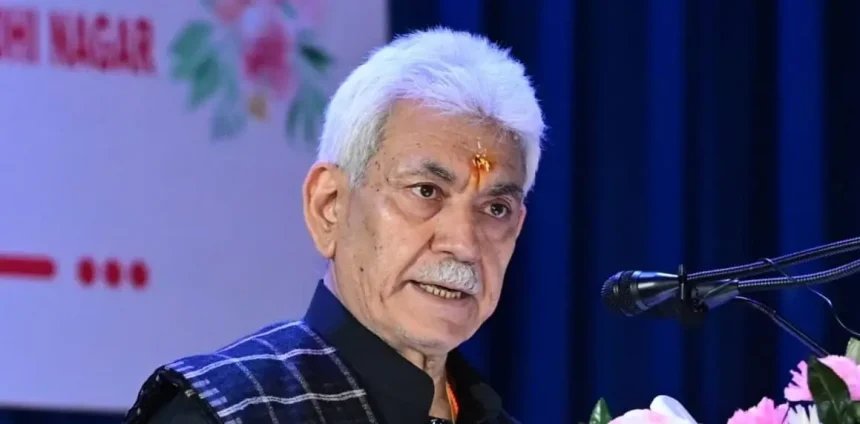
Leave a Comment
Leave a Comment




